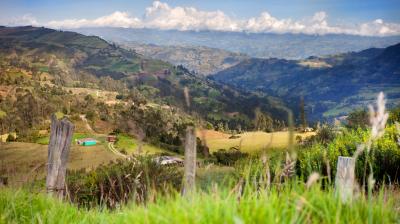The sweltering El Niño at its peak and the arid fields and scorched hills of Bogotá signal the need for a solid green growth strategy that will leap off the page and transcend the convenient international rhetoric of the Government to deliver real, tangible results in the regions.
And what better opportunity could there be than to coordinate peaceful coexistence in the territories with regenerative coexistence between inhabitants and their natural environments? Conceptual platforms, roughly sketched policies, the promises of resources, and examples of successful local models are all present and correct. But we still need a clear pathway and real political will based on non-polarising perspectives between society and the environment, even more so when the country has been staking its energy security on carbon and petroleum - two resources that are ultimately unfeasible for a sustainable growth plan in the medium and long term.
Fortunately, there is room for innovation and joint responsibility that does merely not fall into line with systems of political patronage, centralism and inoperability which one must understand and work around in order to demand that ministers in office and Congress honour their constitutional duty of safeguarding the right to life that requires peace between citizens, and peace between citizens and the environment.
The Clingendael Institute of the Netherlands, funded by the CDKN, launched a study on green growth in Colombia that emphasises the interests, tensions, contradictions and opportunities surrounding the viability of these policies in that country. It highlights ways to bring together the three axes of the environment, peace and development: 'greening' sectors in line with recommendations from the OECD and leveraging compliance in the territories; binding territorial peace to environmental peace while respecting the processes of territorial planning and dividing land use concerns among all public agencies; linking sustainable development with biodiversity and the benefits that this offers; examining the effects of extractive industries on building peace; reinforcing the National Environmental System and demonstrating its role in building territorial peace; augmenting and raising innovation in the territories and at leading energy companies to a national level; and sharing and expanding business models regulated by System B in the territories, particularly those in which efforts to consolidate peace are more pressing.
The promise of true territorial peace between inhabitants and their environments lies in knowing how to weave together these three axes in such a way as to exercise sufficient social and political leverage to break up the obsolete and exclusive centralist, cliquey, and sectorial vision. Let us hope that within a few years we will not once again be seeing the Constitutional Court as the only authority to defend our national natural heritage or to anticipate new violence in competing for resources, but rather strengthened territories where peace is synonymous with the integration between society and the environment.
The article in Spanish can be found here.






